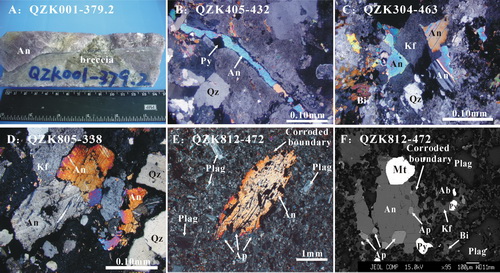Ph.D. student XIAO Bo and his teacher QIN Kezhang research geological and mineralogical features of the Qulong deposit, as well as the result of fluid inclusion microthermometry, in order to reveal the nature of the highly oxidized, S-rich ore-forming magma-hydrothermal system.
These observations indicate that the Qulong magmahydrothermal system was highly oxidized and sulfur-rich. In this study, they confirm a highly oxidized, sulfur-rich magma-hydrothermal system in the Gangdese orogenic setting, which is assumed to be a non-subduction setting.

Fig. 1 Photographs, microphotographs and back-scattered electronic (BSE) images of anhydrite in the Qulong deposit. (Image by XIAO)

Fig. 2 Salinity versus final homogenization temperature (to liquid or by halite melting) for all inclusions of the Qulong porphyry Cu–Mo deposit. (Image by XIAO)
Xiao et al. Highly Oxidized Magma and Fluid Evolution of Miocene Qulong Giant Porphyry Cu-Mo Deposit, Southern Tibet, China.Resource Geology. 2012, 62: 4-18(Download Here)